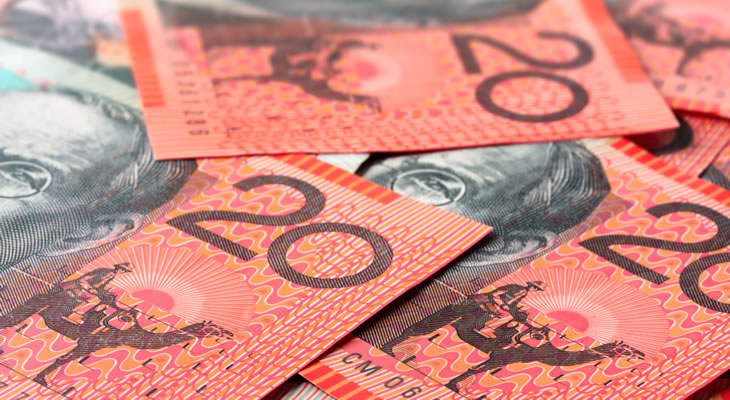Pound to Australian Dollar Exchange Rate Could Fall Lower if Trade War Fears Continue to Fade
Despite some brief attempts to climb last week, the Pound to Australian Dollar (GBP/AUD) exchange rate ended last week slightly lower as demand for risky trade-correlated currencies like the Australian Dollar (AUD) began to strengthen.
GBP/AUD opened last week at the level of 1.7951, and despite briefly touching a high of 1.8097 the pair slipped later in the week and closed at the level of 1.7927.
On Monday, GBP/AUD continued to tumble was US-China trade war fears subsided. At the time of writing, GBP/AUD was trending near a low of 1.7826 – its lowest level in over two months.
Sterling (GBP) has also failed to hold its ground. Hopes for the UK to remain in an EU customs union post-Brexit have only given the Pound limited strength, and signs about the domestic economy are weighing on the British currency too.
Could the Pound to Australian Dollar exchange rate see even further losses though? If upcoming UK data disappoints and risk-sentiment continues to improve, GBP/AUD could fall this week.
Pound (GBP) Exchange Rates Struggle as Brexit and Economic Uncertainties Persist
The Pound outlook has clouded significantly again over the past month, as UK data has continuously disappointed and Brexit news has hit headlines once again.
Last week saw reports emerge that the UK government was planning to keep the nation in an EU customs union post-Brexit.
A separate report claimed that the government’s cabinet had largely agreed to a ‘backstop’ plan to fall back on if a more bespoke deal with the EU is not reached.
However, UK Prime Minister Theresa May played down the reports which left Pound demand mixed.
As UK economic and Brexit uncertainty has worsened, investors are waiting for more concrete news before making any big moves on Sterling. According to Bloomberg:
‘The main thing investors are waiting for is to see whether the latest economic figures show any upturn, after a sluggish first three months of the year when the Beast from the East snowstorm swept across the country. That could push higher the odds of an interest-rate increase as early as August by the Bank of England (BoE)…’
Australian Dollar (AUD) Exchange Rates Benefit from Easing Trade War Jitters
Demand for risky commodity and trade-correlated currencies like the Australian Dollar rose on Monday, as investors digested the weekend’s optimistic trade developments.
Trade negotiations between the US and China concluded over the weekend and according to analysts were largely optimistic, with both sides of negotiations expecting further discussions.
While no specific details on any potential trade deals between the nations have been confirmed yet, this optimistic tone bolstered market hopes that both nations would avoid a trade war.
The US has indicated it will put its trade tariff plans on hold for now until further discussions can be held.
This news particularly benefitted the Australian Dollar, as China is Australia’s biggest trade partner.
According to Ray Attrill from National Australia Bank (NAB):
‘This follows news that the US has effectively declared a truce in its ongoing trade spat with China,
A joint Sino-US statement issued from the White House on Saturday stated that China will help support growth and employment in the United States by increasing purchases of US goods and services.’
Last week’s Australian job market stats had limited impact on AUD trade.
Pound to Australian Dollar (GBP/AUD) Forecast: Focus on UK Data
There is potential for the Pound to Australian Dollar (GBP/AUD) exchange rate to recover in the second half of the week, depending on the strength of Britain’s influential ecostats.
This week’s most influential dataset is likely to be Britain’s April Consumer Price Index (CPI) report, which is due for publication on Wednesday. UK inflation is forecast to have risen from 0.1% to 0.5% month-on-month but have remained at 2.5% year-on-year.
If UK inflation beats expectations, it could bolster hopes that Britain’s economy may be able to sustain tighter monetary policy from the Bank of England (BoE) later this year.
The same could be said for Britain’s April retail sales results, due in on Thursday. Stronger than expected retail data could boost hopes that poor consumer activity in Q1 was caused more by bad weather than a sustained downturn in activity.
Friday’s UK growth projection updates could be influential too.
Of course, Sterling’s strength may be limited if the Australian Dollar continues to be supported by trade news. If investors become even more optimistic about the possibility of a trade deal between the US and China, GBP/AUD could see further losses.


Comments are closed.